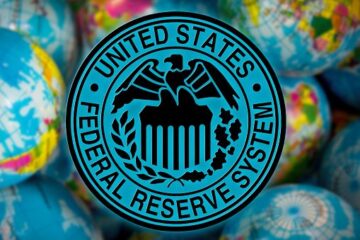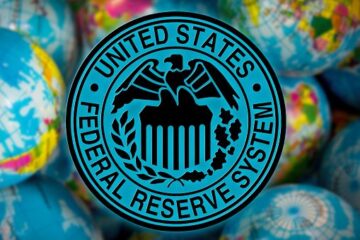I grew up in a comfortable middle-class household. My mother didn’t work outside the home and my father was a criminal defense attorney for much of my childhood. He worked mostly for people he believed had been “wronged,” either by circumstance or by society. He was the kindest and smartest person I’ve ever known, but saving for a rainy day, let alone retirement, was not a priority.
Long story short: I’d never heard of an IRA or any other sort of retirement savings plan when I started working full time. Like my dad, for most of my career I’ve been self-employed and have only had two jobs where a 401(k) was on offer. Confession: I have been somewhat inconsistent with my own retirement planning.
Don’t miss the move: Subscribe to TheStreet’s free daily newsletter
I have no good excuse for not taking better control of saving, but have made sure my kids — Liam (27), Julia (25) and Carina (20) — are planning smarter than I ever did.
Related: Here’s the top retirement regret — and how to avoid it
My older kids studied economics in college and opened IRAs when they were still full-time students. I’ve encouraged them to make saving a priority and a habit. It seems to be working.
The differences between Roth, traditional and SIMPLE IRAs
There are three different types of IRAs available for retirement savings. The type you choose will depend on a number of factors, including your age and whether or not you are self-employed.
Note: Every IRA has pros and cons and the descriptions here are fairly basic, so be sure to talk over the options that suit your circumstances in details with your tax preparer and/or financial advisor.
Roth IRA
Most financial planning experts will recommend a Roth IRA for people in their 20s. With a Roth IRA, contributions are made after taxes, meaning you won’t receive an immediate tax break. However, in exchange, your investments will grow tax-free, and any withdrawals you make in retirement will also be tax-free, since the contributions are not tax-deferred.
Liam started with a Roth IRA when he was 22 and still a full-time student, putting a small amount in every month, mostly from scholarship money he didn’t spend. “With a Roth it’s tax-advantaged,” he says. “You can do a little every month and it compounds over time; it’s compulsory savings because I can’t just pull it out whenever.”
The lack of flexibility prevents him from accessing the money and he finds that beneficial.
On the plus side, he knows he’s already paid taxes on the money, so when he does access it some day, he won’t be taxed on the earnings. He does not have student loans, so he is able to focus on savings.
Julia started her Roth IRA when she was 18 and has put at least a little money in every month since.
“I understand the benefits of compound interest so I want to make sure my money is working for me,” she says. “And even though I am back in school full time and only work part time, I still contribute to my IRA because I don’t want to miss three years of that compound interest.”
With a Roth IRA you are currently allowed to invest a maximum of $7,000 per year and while she’s not able to reach that level, she says she will when she graduates.
Julia will also have student loans to pay off but has promised herself she will at the very least “max out” her IRA every year. Even if that is all she does she will have $1.1 million for retirement when she’s 65, according to this retirement calculator.
More on retirement:
The average American faces one major 401(k) retirement dilemmaHow your mortgage is key to early retirementA few simple tasks can help you thrive in retirement
Traditional IRA
A traditional IRA is an account to which you can contribute pre-tax or after-tax dollars. The contributions may be tax deductible depending on your situation, which can provide the immediate benefit of reducing taxable income.
Traditional IRAs are often a good option for people who expect to be in the same or a lower tax bracket in the future. You pay ordinary income tax on your withdrawals.
SIMPLE IRA
A Savings Incentive Match Plan for Employees (SIMPLE IRA) is an employer-sponsored retirement plan aimed at small businesses that don’t already offer a retirement plan.
If your employer provides a SIMPLE IRA instead of a 401(k), financial experts generally recommend participating. This is because employers are required to match employee contributions, up to 3% of your salary, making it a valuable way to boost your retirement savings.
A couple is seen planning for retirement.
Shutterstock
401(k): If you have access to one, don’t waste it
Like with IRAs there are many variations of 401(k) plans, but the basics are all the same. With a 401(k) plan, you have the option to defer part of your salary, meaning you choose to set aside a portion of your earnings, which is then contributed to a 401(k) plan sponsored by your employer.
Some employers also match employee contributions, up to a certain amount. This deferred income is generally not taxed until you withdraw it in retirement.
Related: Dave Ramsey reveals major retirement, 401(k), Social Security strategy not to miss
Liam has been working for almost five years at this point and has access to his company’s 401(k) but his employer does not match his contributions. “I do get occasional bonuses, though, so I always divert part of that into my 401(k),” he says. “At the same time, I’m also trying to build an emergency savings fund because I never want to have to liquidate any retirement savings.”
Liam says when it comes to his current retirement savings plan his only regret is “not buying foreclosed real estate when I was in high school.”
Hindsight is not a retirement savings solution, however, so be like my kids and get those IRAs and/or 401(k)s going.
Do you have a retirement or investment story to share? Email: [email protected]
Related: Veteran fund manager sees world of pain coming for stocks


